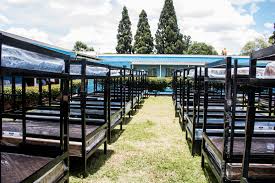Chinyaradzo Children’s home
-
$65,490.00
Funding Goal -
$0.00
Funds Raised -
∞
Days to go -
Target Goal
Campaign End Method
Campaign Story
Chinyaradzo children’s home provides a residential care for at least 60 children but currently we have 30 children ranging from birth to 18 years. The Home was designed to provide temporary shelter for children while alternative arrangements were being made. This includes reintegration with the extended family members and arrangements for foster care.
More so, the home spearheads foster care programs in close liaison with the Department of Social Welfare. However, because of the increasing number of orphans and their needs, coupled with economic hardships, alternative places of committal are no longer easily available. As a result, children have found themselves living at Chinyaradzo Children’s Home for all the eighteen years of their lives. Therefore, to respond strategically to the needs of these children, the purpose of the Home was reviewed. Chinyaradzo now exists to provide a permanent Home to children in difficult circumstances from ages 0-18. Children used to live in dormitories and a need was seen where there was need to promote and adopt normal family structure.
In 2002 after realizing the dormitory model made it difficult for the children to be individually treated or rather establish a relationship with one care giver given regular shifts on care givers, the Home shifted to a family-based model system. The family-based model was ushered in 2002, with the first pilot house established the same year. The new system (family-based model) was aimed at replicating a nuclear family setting where children have continuous relationship with one parental figure and a number of siblings of varied age and sex. They perform all household chores together as a single unit within the setting of a larger home. This new system brought a marked paradigm in terms of boosting a sense of belongingness, trust openness, improved communication, and an enhanced bond of familiarity amongst family members and more so attainment of social skills.
Currently there are four such units functioning, of which three houses are within the institution and one in the community but it’s no longer functioning because it needs renovations. Each house can accommodate up to ten children of different ages and sex, but now they are exceeding ten because of the increasing number of children in need. The houses are headed by permanent resident care givers who look after the needs of the children from physical, spiritual, moral, educational, or social development.

